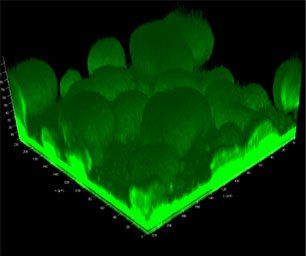BACTERIAL BIOFILMS

Microbiology research has focused for many years on studying pure cultures of free-living bacteria. Recent advances in molecular biology and microscopy have opened the door to a new era in microbiology – the ability to study bacterial biofilms. Biofilms are microbial communities embedded in a self-produced extracellular polymeric matrix. It is now recognized that cells undergo profound changes as part of the transition from free-living to matrix-embedded communities. Biofilms are abundant in nature and constitute a unique mode of growth that allows survival in hostile environments. In particular, biofilms exhibit increased resistance to chemical disinfection, antimicrobial therapy and the host immune response. This has made biofilms a worrying source of microbial contamination in environmental, industrial and clinical settings. Despite intense research efforts, our current understanding of the physiology and complexity of biofilm communities is still limited. We are currently examining the role of NanoRNA (2-5 long nucleotides) and c-di-GMP signaling in the regulation of biofilm formation in the opportunistic pathogen Pseudomonas aeruginosa. Characterizing these fundamental processes will not only shed light on the formation of these bacterial communities, but also facilitate development of innovative treatments (e.g., novel antibiofilm agents) to mitigate biofilm-related environmental, industrial and medical effects.
